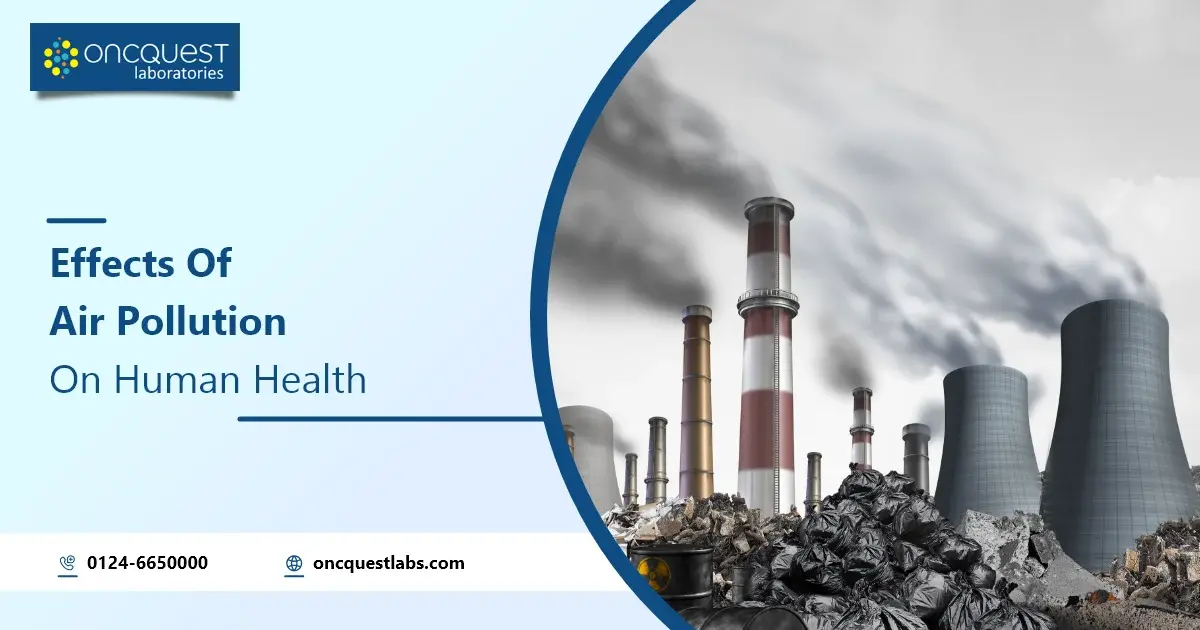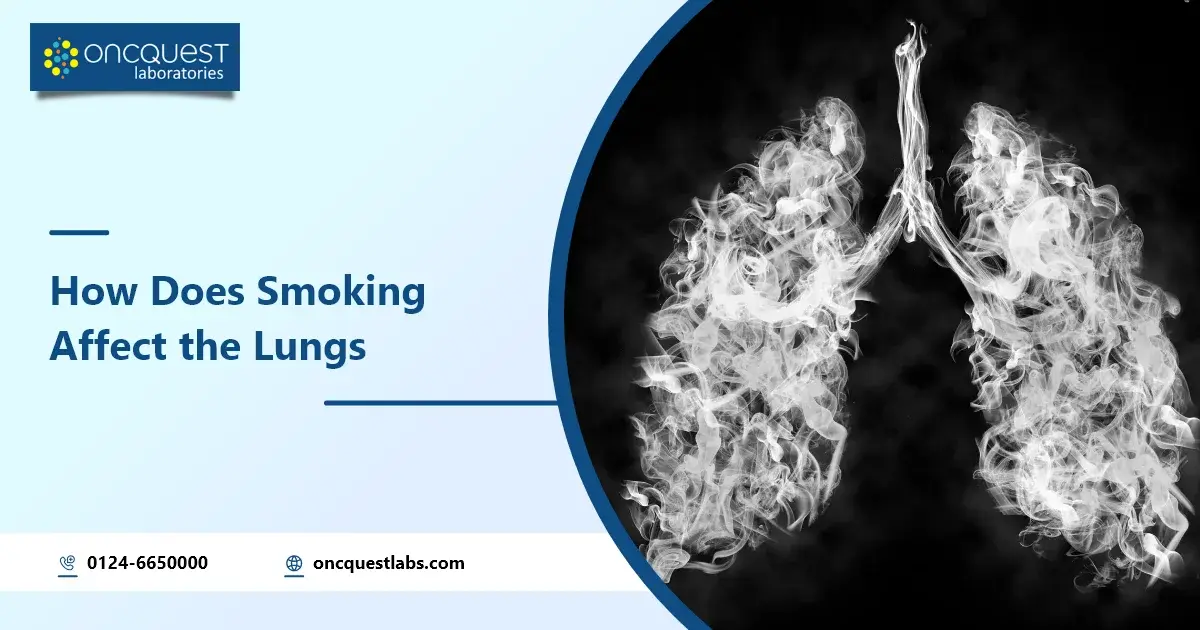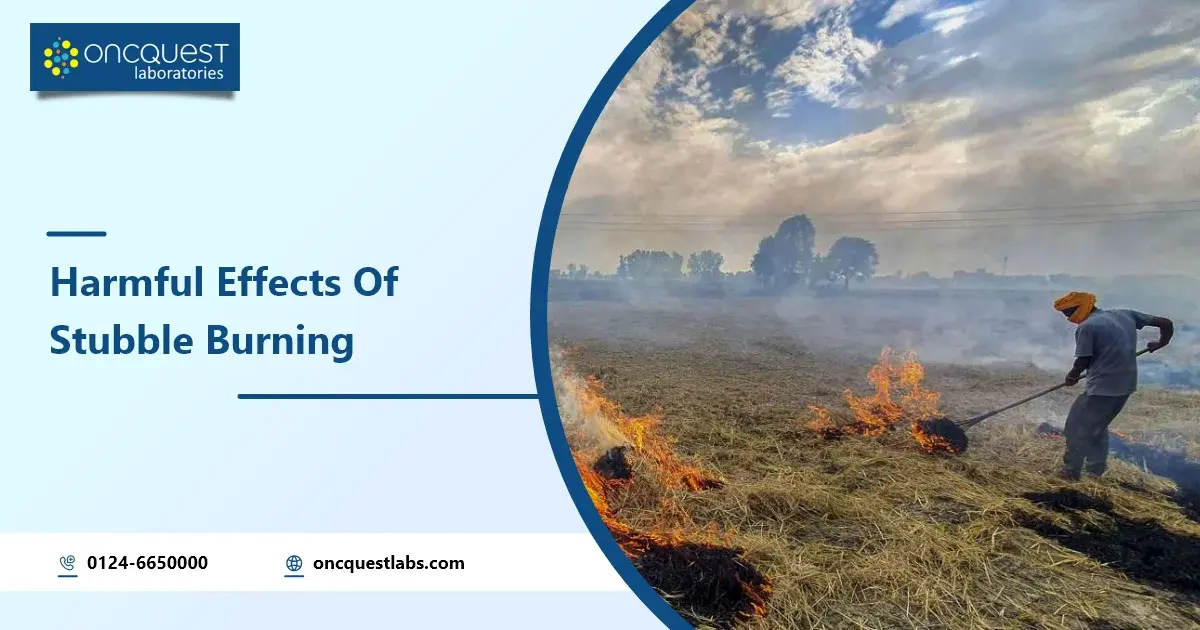In an era where urbanization and industrialization are on the rise, the consequences of air pollution have become increasingly prevalent and concerning. The air we breathe, once considered a limitless resource, is now laden with pollutants that pose significant risks to human health. In this blog, we will delve into the intricate web of effects that air pollution casts upon our well-being, exploring the multifaceted impact on respiratory health, cardiovascular function, and overall quality of life. Join us on a journey through the unseen dangers lingering in the air and the imperative need to address this pressing global issue for the sake of our collective health.
Contents
Types of Air Pollution
Air pollution comprises various types of pollutants that can adversely affect the quality of the air we breathe. Here are some common types:
- Particulate Matter (PM): Tiny particles suspended in the air, including dust, dirt, soot, and liquid droplets. PM can penetrate deep into the respiratory system, causing respiratory and cardiovascular issues.
- Nitrogen Oxides (NOx): Gases produced by combustion processes, mainly from vehicles and industrial activities. NOx contributes to smog formation and respiratory problems.
- Ozone (O3): While ozone in the upper atmosphere protects us from the sun’s ultraviolet rays, ground-level ozone is a component of smog and can cause respiratory issues.
- Sulfur Dioxide (SO2): A gas produced by burning fossil fuels containing sulfur, such as coal and oil. SO2 can lead to respiratory problems and contribute to acid rain.
- Carbon Monoxide (CO): Colorless, odorless gas produced by incomplete combustion of carbon-containing fuels. CO can interfere with the body’s ability to transport oxygen and cause poisoning.
- Volatile Organic Compounds (VOCs): Organic chemicals that can evaporate into the air. Released from various sources like industrial processes and household products, VOCs contribute to air pollution and can have adverse health effects.
Understanding these types of air pollutants is crucial for developing strategies to mitigate their impact on human health and the environment.
Impact on Respiratory Health
Air pollution has profound implications for respiratory health, affecting the entire respiratory system from the nose and throat to the lungs. Here are some key impacts:
- Exacerbation of Respiratory Conditions: Individuals with pre-existing respiratory conditions like asthma or chronic obstructive pulmonary disease (COPD) often experience worsened symptoms when exposed to air pollutants. Pollutants can trigger or intensify respiratory attacks.
- Increased Respiratory Infections: Prolonged exposure to air pollution weakens the respiratory system’s defenses, making individuals more susceptible to respiratory infections like pneumonia and bronchitis.
- Development of Respiratory Diseases: Long-term exposure to certain pollutants can contribute to the development of respiratory diseases, including lung cancer. Particulate matter and hazardous gases have been linked to chronic respiratory conditions.
- Reduced Lung Function: Children growing up in areas with high air pollution levels may experience stunted lung development. Long-term exposure can lead to reduced lung function in adults, particularly in regions with persistent air quality issues.
- Aggravation of Allergies: Airborne pollutants can worsen allergic reactions, making individuals more sensitive to common allergens. This can result in increased respiratory discomfort and exacerbation of allergy symptoms.
Addressing the impact of air pollution on respiratory health requires collective efforts, including stricter emission controls, increased green spaces, and public awareness campaigns to reduce exposure and protect vulnerable populations.
Effects on Cardiovascular Function
Air pollution also poses significant risks to cardiovascular function, impacting the heart and circulatory system in several ways:
- Increased Risk of Cardiovascular Diseases: Long-term exposure to air pollution, especially fine particulate matter (PM2.5) and nitrogen dioxide (NO2), is associated with an elevated risk of cardiovascular diseases. This includes conditions like heart attacks, strokes, and hypertension.
- Inflammation and Oxidative Stress: Air pollutants can trigger inflammation and oxidative stress in the body. Chronic inflammation is linked to atherosclerosis, a condition where arteries become narrowed and hardened due to the buildup of plaques.
- Changes in Heart Rate and Rhythm: Exposure to air pollution, particularly fine particles, has been linked to changes in heart rate variability and rhythm. These alterations can contribute to cardiac issues and increase the risk of adverse cardiovascular events.
- Aggravation of Existing Cardiovascular Conditions: Individuals with pre-existing cardiovascular conditions, such as heart failure, may experience worsening symptoms when exposed to air pollution. The added stress on the cardiovascular system can lead to complications.
- Impact on Blood Vessels: Air pollutants can damage blood vessels, affecting their ability to expand and contract properly. This vascular dysfunction contributes to hypertension and increases the risk of cardiovascular events.
Understanding these cardiovascular effects underscores the importance of addressing air pollution as a public health concern. Implementing measures to reduce emissions and improve air quality is crucial for safeguarding cardiovascular well-being on a global scale.
Long-term Health Implications
Long-term exposure to air pollution carries serious health implications that extend beyond immediate respiratory and cardiovascular effects. Here are some enduring consequences:
- Chronic Respiratory Conditions: Prolonged exposure to air pollutants, especially fine particulate matter and ozone, is linked to the development and exacerbation of chronic respiratory conditions such as chronic bronchitis and emphysema.
- Cardiovascular Diseases: Continued exposure to air pollution increases the risk of developing chronic cardiovascular diseases, including atherosclerosis, hypertension, and heart disease. This heightened risk persists over the long term.
- Reduced Lung Function: In areas with persistent air quality issues, individuals may experience a decline in lung function over time. This can lead to impaired respiratory capacity and increased susceptibility to respiratory infections.
- Cancer Risk: Long-term exposure to certain air pollutants, such as benzene and formaldehyde, is associated with an elevated risk of developing lung cancer and other respiratory cancers. This risk accumulates with prolonged exposure.
- Neurological Effects: Emerging research suggests a potential link between air pollution and neurological conditions, including cognitive decline and an increased risk of neurodegenerative diseases like Alzheimer’s and Parkinson’s.
- Reduced Life Expectancy: The cumulative impact of air pollution on various organ systems contributes to a reduced life expectancy, particularly in regions with consistently high levels of pollution.
Addressing these long-term health implications requires sustained efforts to reduce emissions, implement effective air quality regulations, and promote public awareness of the importance of clean air for overall well-being.
Global Perspectives
Air pollution is a global issue that affects diverse regions in varying degrees, demanding a comprehensive understanding of its impact and efforts toward mitigation. Here are some global perspectives on air pollution:
- Urban Centers and Industrial Regions: Rapid industrialization and urbanization often result in elevated pollution levels in densely populated areas. Developing and emerging economies frequently face challenges in balancing economic growth with environmental sustainability.
- Transboundary Pollution: Air pollutants, including particulate matter and ozone, can travel across borders, affecting air quality in neighboring regions and even continents. This emphasizes the need for international cooperation to address shared air quality challenges.
- Vulnerable Populations: Certain regions, particularly in low-income countries, may lack the infrastructure to monitor and control air pollution adequately. Vulnerable populations, such as children and the elderly, are disproportionately affected, highlighting global disparities in health outcomes.
- Climate Change Interconnection: Some air pollutants, like black carbon, contribute to climate change by accelerating ice melt and altering weather patterns. The interconnection between air pollution and climate change requires a holistic approach to address both issues simultaneously.
- Policy Variability: Countries exhibit considerable variability in air quality regulations and enforcement. While some nations have stringent measures in place, others may struggle with implementation, leading to disparities in air pollution levels and health impacts.
- Emerging Solutions: Globally, there is a growing recognition of the need for sustainable practices and cleaner technologies. Countries are increasingly investing in renewable energy sources, electric transportation, and green urban planning to mitigate the impact of air pollution.
Understanding these global perspectives is crucial for developing coordinated strategies and policies to combat air pollution on an international scale, ensuring a healthier and more sustainable future for all.
How To Protect Human Health From Air Pollution?
Protecting human health from air pollution involves a combination of individual actions, community efforts, and broader policy measures. Here are key strategies:
- Stay Informed: Monitor local air quality indices and forecasts. Apps and websites often provide real-time air quality information, helping individuals make informed decisions about outdoor activities.
- Limit Outdoor Activities on Poor Air Quality Days: On days with high pollution levels, especially in urban areas, reduce outdoor activities, particularly strenuous exercises. This minimizes exposure to harmful pollutants.
- Use Air Purifiers: Consider using air purifiers indoors, especially in areas prone to high pollution. These devices can help reduce indoor concentrations of particulate matter and other pollutants.
- Create Green Spaces: Support initiatives that promote green spaces in urban planning. Trees and vegetation act as natural filters, improving air quality and providing health benefits.
- Reduce Car Emissions: Opt for eco-friendly transportation options such as electric or hybrid vehicles. Carpooling, biking, and walking also contribute to lowering individual carbon footprints and reducing traffic-related emissions.
- Advocate for Clean Energy: Support policies and initiatives promoting clean energy sources. Transitioning to renewable energy reduces dependence on fossil fuels, a major contributor to air pollution.
- Indoor Ventilation: Ensure proper ventilation in indoor spaces. Opening windows and using exhaust fans can help reduce indoor air pollutants.
- Industry Regulations: Advocate for and support stringent air quality regulations for industries. Encourage the use of cleaner technologies and sustainable practices to minimize emissions.
- Policy Engagement: Engage in local and national advocacy for air quality policies. Support and participate in initiatives that aim to improve air quality standards and enforcement.
- Education and Awareness: Increase awareness about the health impacts of air pollution. Education campaigns can empower communities to take collective action and demand cleaner air.
By combining individual efforts with community-wide and policy-level initiatives, it is possible to mitigate the impact of air pollution on human health and work towards creating cleaner, healthier environments.
Conclusion
In conclusion, the pervasive effects of air pollution on human health demand urgent attention and concerted action. From respiratory ailments to cardiovascular diseases, the toll on well-being is evident. Long-term exposure raises the specter of chronic conditions and a diminished quality of life. This is a global challenge, requiring collaborative efforts to implement stringent regulations, promote sustainable practices, and foster public awareness. As we navigate the complex interplay between human activities and environmental health, a commitment to cleaner air is paramount for safeguarding our collective future and ensuring a healthier, more resilient global population.
Frequently asked Questions
What are the 5 health effects of air pollution?
The various health problems caused by air pollution show that we urgently need effective ways to deal with it. Breathing issues like asthma, the higher chances of heart problems and cancer, and worries about kids’ lung health all point to serious consequences. The connection between air pollution and brain problems makes it even more complicated. To tackle these risks, it’s crucial to focus on sustainable actions, strict rules, and working together globally. This way, we can make sure everyone has a healthier future.
What are the effects of air pollution on human health solutions?
To address the health effects of air pollution, effective solutions include promoting cleaner energy sources, enhancing public transportation, and implementing stricter emission standards for industries. Additionally, creating green spaces in urban areas and raising public awareness about the importance of reducing personal carbon footprints contribute to mitigating the impact on human health.
What are the health effects of air pollution India?
In India, air pollution poses serious health risks, with a noticeable surge in respiratory problems like asthma and bronchitis. Prolonged exposure elevates the threat of cardiovascular diseases, and elevated particulate matter levels impact lung function. The nation grapples with a heightened occurrence of respiratory cancers linked to pollutants like benzene and formaldehyde, especially affecting vulnerable groups such as children and the elderly.





